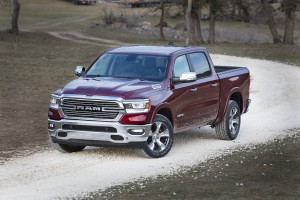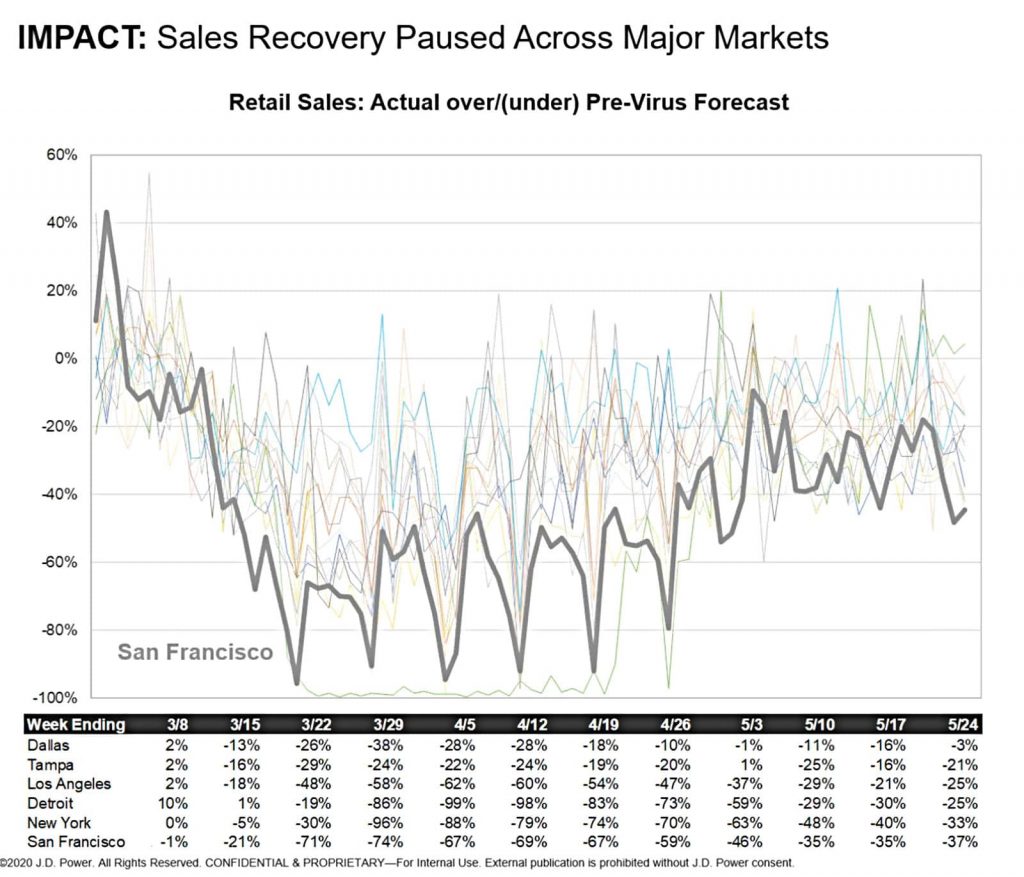
Pickups are the only segment of the U.S. market essentially back to normal – but sales could slow due to fast-shrinking inventories.
The Memorial Day weekend is always a big one for the U.S. auto industry and was expected to be particularly strong this year, the industry anticipating a surge in demand thanks to hefty incentives and the end of pandemic lockdowns in much of the country.
The problem is that this scenario didn’t play out. U.S. car sales went nowhere during the holiday, according to real-time data tracked by J.D. Power, demand holding flat at 25% below pre-pandemic forecasts for the third week in a row.
“Our hopes and our hearts wanted more” sales over the holiday, said Tyson Jominy, head of the Power Information Network that tracks dealer sales on an ongoing basis. With a burst of demand failing to materialize, he added, “Our recovery is now officially paused and moving sideways.”
(May sales to drop as fleet sales collapse.)
The big question is why? A variety of factors may be holding back the surge in sales that many had expected as things began to get back to normal in the U.S. Among the six most likely “culprits,” said Jominy:
- Declining inventories, especially when it comes to the pickup trucks that suffered only marginal dips in sales during the worst of the pandemic lockdown;
- Lease buyers who’ve continued to extend the contracts they had rather than come back for new vehicles;
- Sub-prime buyers who either can’t afford new products, can’t get loans or who may have shifted from buying new to used;
- Older buyers who can more readily wait since many are retired. More vulnerable to COVID-19, they simply may be waiting until they feel safe going to showrooms;
- Sub-prime buyers aren’t the only ones shifting from new to used. By comparison, demand for “previously owned” vehicles was down just 10% from forecast last week.
And then there’s the possibility that, as the country begins to open up, many potential new car buyers have found “a park calling (their) name,” said Jominy, rather than a new car showroom.
(Deals await car shoppers ready to buy now.)
Surprisingly, some of the markets that had been hardest hit by the pandemic, such as Seattle, Detroit, Los Angeles, San Francisco and New York, saw the biggest improvement in sales this past week. Sales in Motown were spot on with the rest of the country, off by 25%, but that’s a far cry from the 98% Detroit dip in mid-April.
On the other hand, 110 other U.S. markets, largely those in Middle America, were down – 11% of them by more than 50%, according to Power.

It may seem a bit of an eye chart but the numbers at the bottom tell the story about how some markets are rebounding.
Some product segments continued to do well, especially pickups, down just 4% compared to Power’s pre-pandemic forecast. But there is “extremely tight inventory” for trucks that could contribute to declining sales in the weeks ahead. In contrast, there is plenty of inventory when it comes to sedans and coupes, but still little demand.
Though most U.S. auto plants have now restarted, we may see situations “where the industry is selling more vehicles than it can make,” said Doug Betts, the head of Power’s automotive operations.
Complicating matters, he added, manufacturers continue struggling to keep those factories running but, as Ford has experienced twice this week, when workers are found to have the disease that forces temporary shutdowns and there “will continue to be disruptions” limiting production for some time to come.
(U.S. new car sales continue rebounding — but industry isn’t out of the woods yet.)
For May, U.S. new car sales are likely to come in at least 400,000 vehicles short of pre-pandemic forecasts, with the industry down well over 1 million for the year-to-date. Power still warns that demand for the full year could still dip as low as 13 million, down from 17.1 million in 2019. And that’s not the lowest forecast. Last week, online selling site TrueCar forecast demand could dip to well under 12 million if the hoped for rebound doesn’t occur in the next few months.


Why would sales surge over Mem Day?
Memorial Day weekend has traditionally been the 2rd-biggest sales weekend of the year. And this year’s holiday comes as many states open up and dealerships reopen.
Paul E.